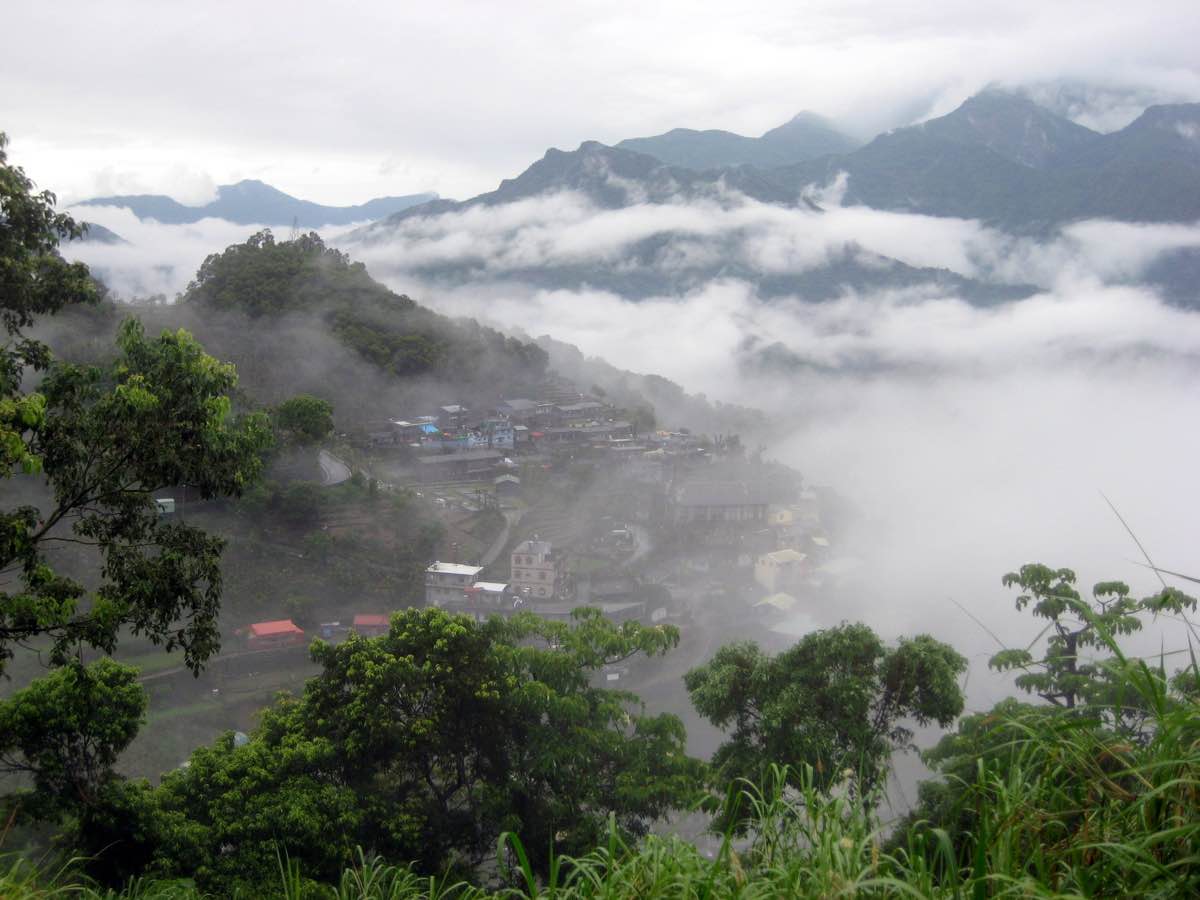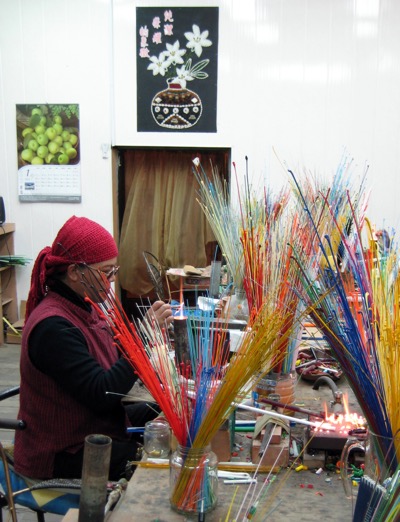In Part 1 of this three-parter on Taiwan’s most engrossing aboriginal districts, we looked at Wulai near Taipei. Part 2 focused on communities in East Taiwan. For Part 3, we’re going to the far south of the island.
Alishan is the best known indigenous township in Taiwan’s southern half, but certainly not the only tribal district worth visiting. We at Life in Taiwan especially recommend two places further south.

Mountain mists are common around Wutai.
Sandimen

A glass-bead artisan at work.
Driving inland from Taiwan’s second city, Kaohsiung, the lowlands come to an abrupt halt. A few minutes into the hills, you’ll reach the compact township of Sandimen, a stronghold of the Paiwan people. If it happens to be a weekend, you’ll immediately notice mouthwatering aromas wafting up from roadside barbeques. Cuts of wild boar and homemade sausages are cooked on thin slabs of slate heated by bamboo charcoal. It’s no surprise that the first thing many tourists do is grab a meaty snack!
Some of Sandimen’s restaurants serve chinavu and ahvai, true Paiwan specialities. Chinavu is meat and taro paste wrapped in two layers of leaves, of which only the inner one is eaten. Ahvai, sometimes likened to sushi, consists of glutinous rice pounded into a paste, flavoured with pumpkin and adzuki beans, then wrapped in a banana leaf. Because very little salt is used, it’s possible to enjoy the original taste of the ingredients.
There’s more to Sandimen than food, however. Several skilled craftsmen and women are based here, so it’s an excellent place to find quality souvenirs. Some are engaged in the production of glass-bead jewellery; others work with leather or wood.
Wutai
Wutai vies with Sandimen to be the no. 1 attraction in Pingtung County for travellers who prefer mountains to beaches. As you need to drive through Sandimen to reach Wutai – it takes about half an hour – it makes sense to visit both on the same day.
The border between Sandimen and Wutai townships was drawn to take into account ethnic differences. Whereas most of Sandimen’s inhabitants are Paiwan, Wutai is dominated by the Rukai, a much smaller tribe. As of mid-2017, around 13,200 Taiwan citizens were registered as Rukai; around 3,000 of them live in Wutai.
Wutai is a Mandarin rendering of the aboriginal toponym Vudai. The Chinese characters for Wutai mean ‘fog plateau’ and the valley often lives up to this name. Sudden mists sometimes blow in, but very often the scenery is superb. Indigenous culture has survived fairly well here, in large part because between the late 1940s and the early 1970s no proper road linked the district to the lowlands.
Several families live in appealing slate-covered homes, but perhaps the most remarkable structures are two Christian houses of worship. If you can, check out the interiors as well as the exteriors of both. Wutai’s Presbyterian Church in Wutai boasts an altar made from a massive knot of tree roots, while the Catholic Church in nearby Shenshan has rows of hand-carved wooden chairs, each one made to resemble a tribesman in traditional garb.
Tailored Taiwan Private Tours
Interested in learning more about Taiwan’s first nations? This is where life of Taiwan comes in, we specialise in catering to the needs of English-speaking and European visitors. Join our luxury tours or family tours of Taiwan for an unforgettable journey through Taiwan. Contact us today to plan your perfect Taiwan private tour.
